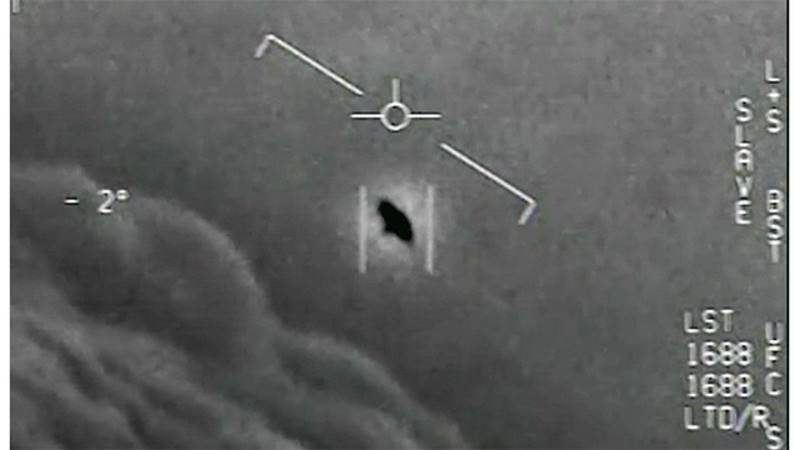A few years earlier, then-Senator Nelson (D-Fla.) received classified briefings from fighter pilots who had observed mysterious objects exhibiting extraordinary flight characteristics. According to Nelson, "the hair stood up on the back of my neck" while reviewing a classified report on UFOs.
Nelson's briefings on unidentified anomalous phenomena (UAP) undoubtedly influenced NASA's decision to establish a 16-member UAP Study Team, consisting largely of outside academics, to "lay the groundwork for future study on the nature of UAPs."
But from what can be gleaned publicly, the NASA panel appears to be taking a remarkably unscientific approach to the UFO phenomenon.
In May, NASA's UAP study team held its first public meeting. According to Dr. Sean Kirkpatrick, the director of the Pentagon's UFO office and a speaker at the NASA-hosted forum, of the 800 reports received by his office by late May, the most common observations are of "spheres," 3-13 feet in size and "white, silver, [or] translucent" in color.
Intriguingly, sensors have observed such objects traveling at speeds ranging from "stationary to Mach 2," or twice the speed of sound, with "no thermal exhaust detected."
Kirkpatrick described these perplexing encounters in greater detail as he presented footage of a "metallic," "spherical orb" recorded by a surveillance drone in the Middle East. Referring to the object in the video, Kirkpatrick stated, "this is a typical example of the thing that we see most of. We see these ['metallic orbs'] all over the world, and we see these making very interesting apparent maneuvers."
Kirkpatrick's comments should have immediately piqued the scientific curiosity of every individual in the room. How, after all, can spherical objects, lacking wings or apparent means of propulsion, remain stationary or travel at the speed of sound? Moreover, how could they conduct such remarkable maneuvers without emitting any heat signature?
One might have expected every scientist's hand to shoot up immediately during the question-and-answer period following Kirkpatrick's presentation. Yet not one of the NASA panel's 16 members asked Kirkpatrick anything about his extraordinary comments.
It raises the question: Are UFOs the death knell of scientific curiosity and inquisitiveness?
It gets worse. Kirkpatrick volunteered that many of the reports involving "metallic orbs" are based "very much" on "multi-sensor observations."
Multi-source, corroborative data, as described by Kirkpatrick, are among the most valuable to scientists. Yet not one member of the NASA panel followed up on Kirkpatrick's second intriguing revelation of the morning. Indeed, the chair of the NASA study team appeared distracted, seemingly glued to his phone.
The peculiar UAP characteristics outlined by Kirkpatrick were not only reported by servicemembers during World War II, but they are also identical to those described by former U.S. Navy fighter pilot Ryan Graves, who testified under oath during a July 26 congressional hearing.
Graves, along with at least 50 to 60 naval aviators, observed spherical objects capable of remaining stationary against hurricane-force winds or moving at the speed of sound on a daily basis in 2014 and 2015. Moreover, the mysterious craft remained aloft for extreme durations, far outlasting fighter jets.
Graves's recollections, it should be noted, appeared in the New York Times in 2019 and on 60 Minutes in 2021. Since then, his accounts, including nuanced technical analyses, have been published widely in a variety of media. Yet, despite years of exposure, an entire panel of experts tasked with gathering preliminary data on the UFO phenomenon appeared oblivious to the remarkable congruence between Graves's recollections and Kirkpatrick's description of spherical objects capable of seemingly extraordinary maneuvers.
This was particularly evident when one NASA panelist conducted a mathematical analysis of the well-known "GoFast" UAP video. Recorded by naval aviators in 2015 amid daily encounters — including a harrowing near-miss — with the mysterious, sphere-like objects described by Graves, the video shows a small, spherical object appearing to move rapidly over the ocean.
In his mathematical analysis, the NASA panelist concluded that the object was traveling at only 40 miles per hour, which, he stated, "is consistent with wind speeds at 13,000 feet."
But the panel member made a significant error. He neglected to incorporate the effect of strong winds on the flight path of the jet that recorded the video. If a key on-screen figure (the accuracy of which is admittedly disputed by current and former fighter pilots) is correct, a full accounting for the wind would place the object's speed closer to 100 miles per hour.
In other words, the "GoFast" video shows a small, sphere-like object with no wings, engines or thermal signature demonstrating "very interesting apparent maneuvers."
The "GoFast" incident, in particular, prompted a top Navy commander to send an email bearing the subject line "Urgent Safety of Flight Issue" to subordinates requesting information on the unknown objects wreaking havoc on pre-deployment training operations.
Moreover, "GoFast" was filmed just minutes before the now-famous "Gimbal" video. The "Gimbal" incident, which former aviator Graves has recounted in significant detail, is particularly perplexing. In the encounter, a "fleet" of smaller objects — likely the spherical craft observed daily by Graves and his fellow aviators — travel against 140 mile per hour winds ahead of a larger "parent" craft.
Critically, repeatable, verifiable geometrical analyses of the "Gimbal" incident, which exploit data from the on-screen display, corroborate aviators' accounts that the object exhibited highly anomalous flight characteristics. NASA scientists would be wise to review the analyses. (Full disclosure: I am the co-author of the above-referenced scientific paper, which was presented at a recent American Institute of Aeronautics and Astronautics conference.)
NASA's UAP Study Team, it would appear, has its work cut out for itself.
Marik von Rennenkampff served as an analyst with the U.S. Department of State's Bureau of International Security and Nonproliferation, as well as an Obama administration appointee at the U.S. Department of Defense.




Reader Comments